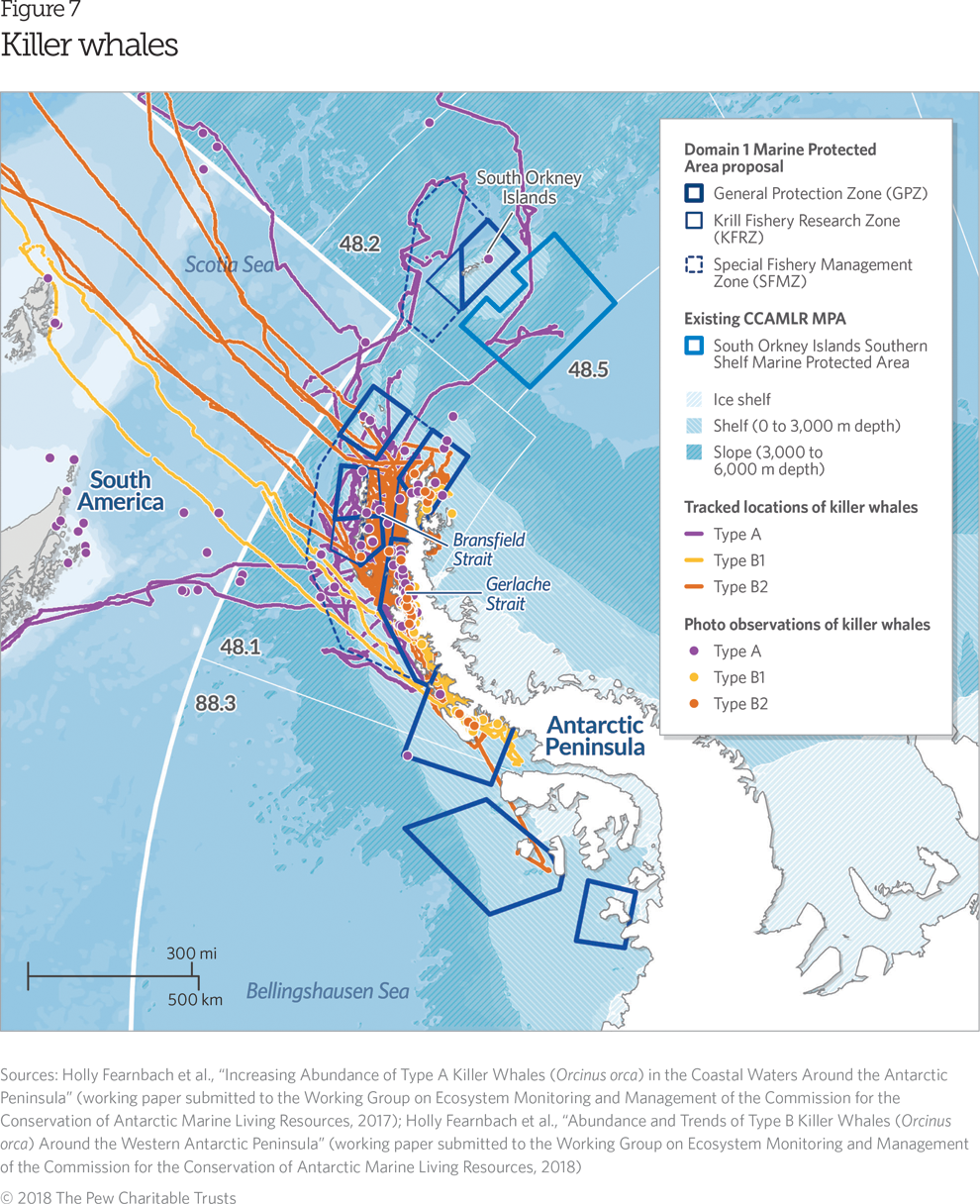Protections for the Antarctic Peninsula Are Critical for Marine Life
Climate change, concentrated fishing threaten krill and their predators
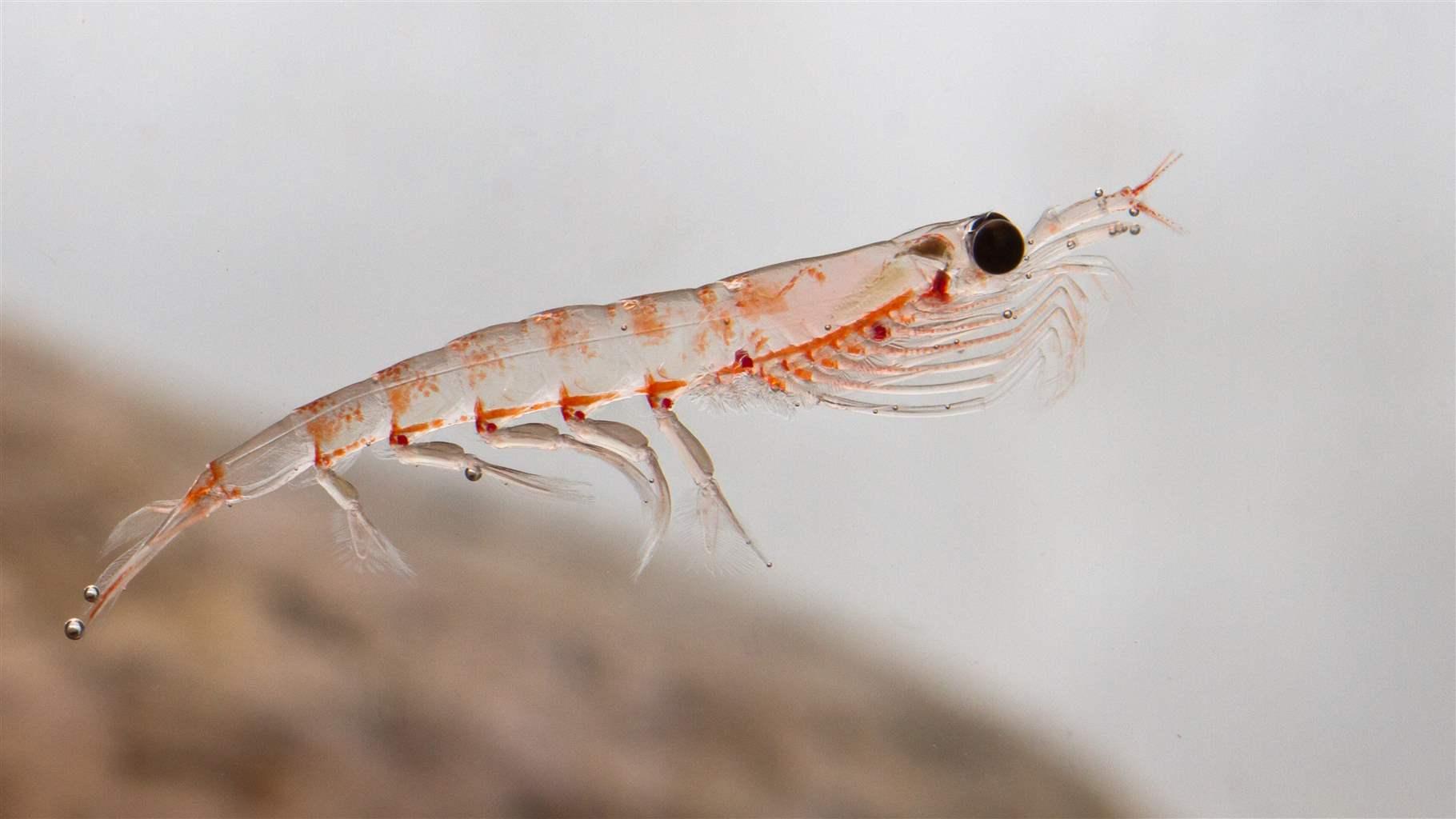
Overview
The waters off the western Antarctic Peninsula and the Scotia Sea are home to diverse and abundant marine life. People who travel to this region are likely to encounter orcas and humpback whales, fur and crabeater seals, and some of the 1.5 million pairs of Adélie, chinstrap, and gentoo penguins that nest and forage there. But they are unlikely to spot what these species depend on for survival: huge swarms of the tiny shrimplike crustaceans called Antarctic krill.
The peninsula region is also one of the most rapidly warming places on Earth, and the impacts of the changing climate threaten marine life. As temperatures continue to rise, sea ice—critical habitat for penguins, seals, and other Antarctic species—is shrinking. Krill also rely on sea ice: These small creatures use it to breed, and juveniles feed off dense seasonal algae that grow beneath it. If krill populations plummet, it would have a devastating effect on the rest of the region’s food web.
As valuable carbon sinks, krill are helping to mitigate climate change. Each year, they are able to store and move to the bottom of the ocean an amount of carbon equivalent to that produced by 35 million cars. In addition to environmental changes, krill face increasing pressure from concentrated fishing in coastal areas throughout the peninsula.
In October, the Scientific Committee of the Commission for the Conservation of Antarctic Marine Living Resources (CCAMLR) will consider a proposal by Chile and Argentina to protect many of the region’s critical areas and thereby alleviate some of the strains on marine life posed by a changing climate and fishing. It calls for prohibiting krill fishing in a zone that covers the coastal foraging ranges of penguins and other krill predators in two of the peninsula’s most biologically important areas: the Bransfield and Gerlache straits. The proposal also includes a permanent, large no-fishing zone in the Bellingshausen Sea along the western Antarctic Peninsula that is known to be an important spawning and nursery area for krill. And it calls for fully protecting important spawning and nursery habitats for commercially and ecologically valuable fish species, including toothfish, icefish, and silverfish. It is critical that these protections include reference areas where fishing would be banned, so scientists could fully distinguish the impacts of climate change from those of fishing in this biologically rich region.
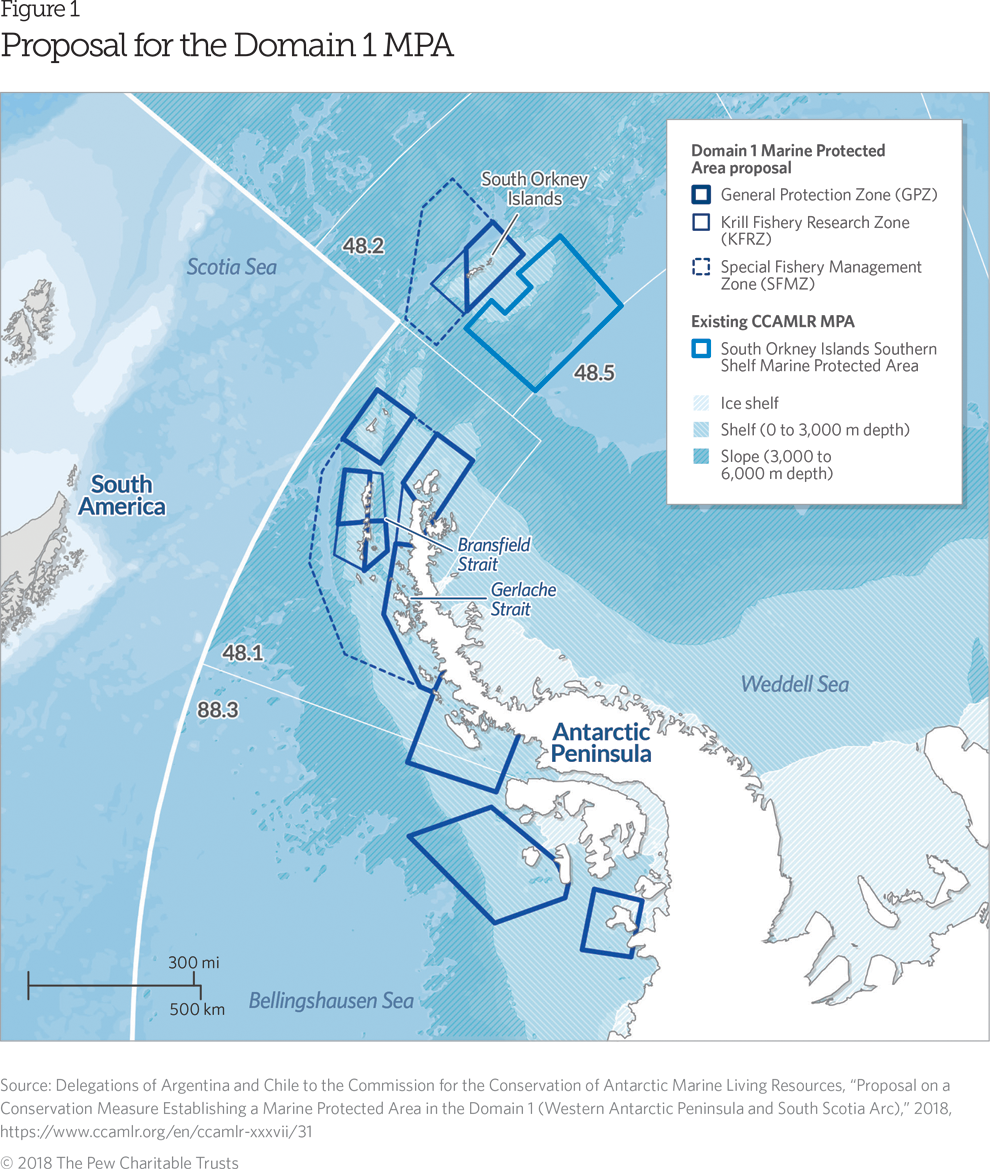
Chile and Argentina submitted a proposal for the Domain 1 Marine Protected Area (MPA) to CCAMLR’s Scientific Committee in 2018. The MPA would include three special zones: a general protection zone, where no fishing would be allowed except for limited samples needed to better understand the health of local krill populations; a krill fishery research zone where the effects of fishing on the ecosystem can be studied; and a special fishery management zone, which would allow for some commercial fishing of krill as long as it adhered to CCAMLR regulations. CCAMLR is working to advance ecosystem-based fisheries management in this region to protect the diversity of animals that depend on Antarctic krill.
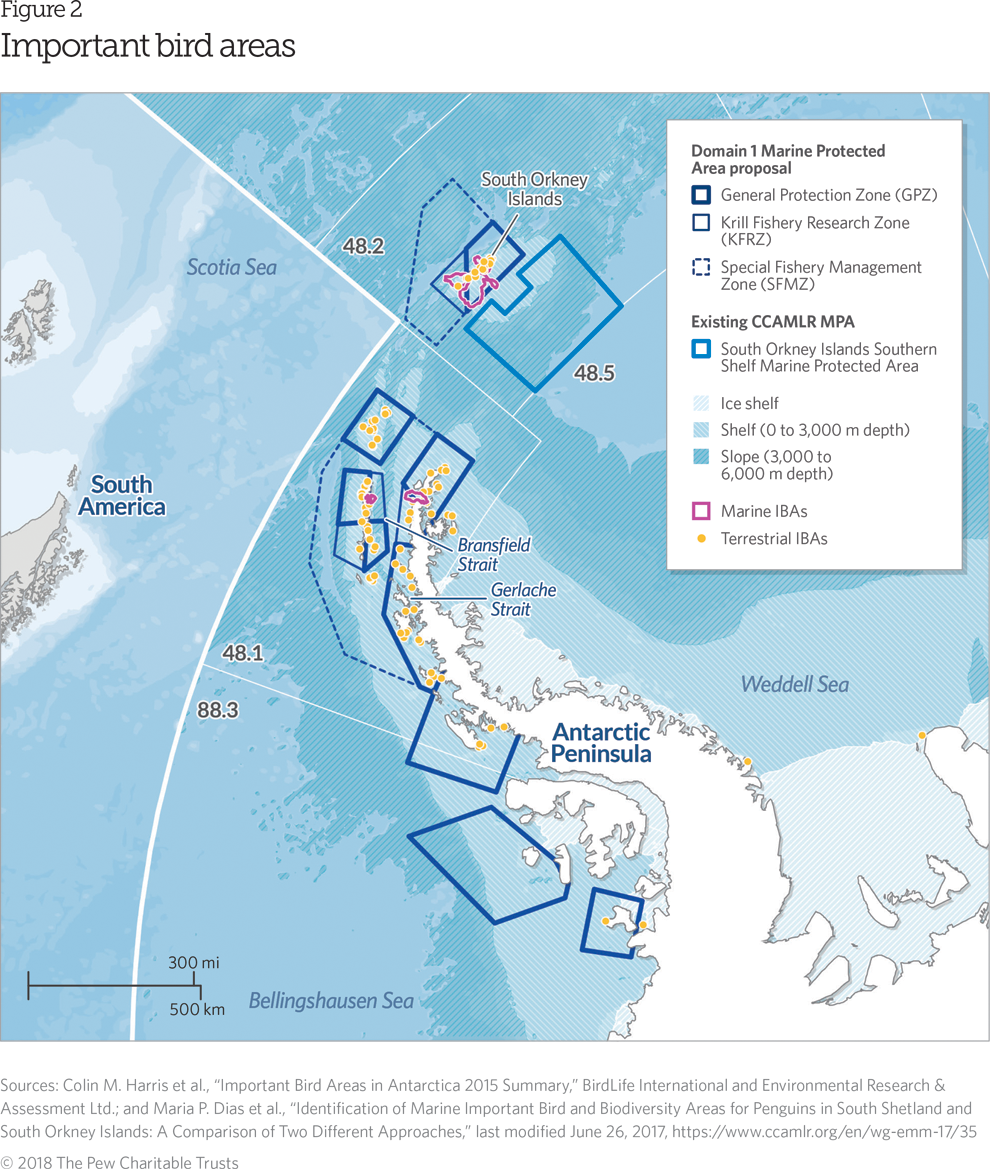
Important bird areas (IBAs) are places of international significance for bird conservation. Scientists have identified terrestrial IBAs on the peninsula for the most critical breeding colonies of several seabird populations, including several species of penguin, petrel, fulmar, and skua. Marine IBAs for penguins—including chinstraps, Adélies and gentoos—recognize the most important foraging hot spots for key penguin colonies.
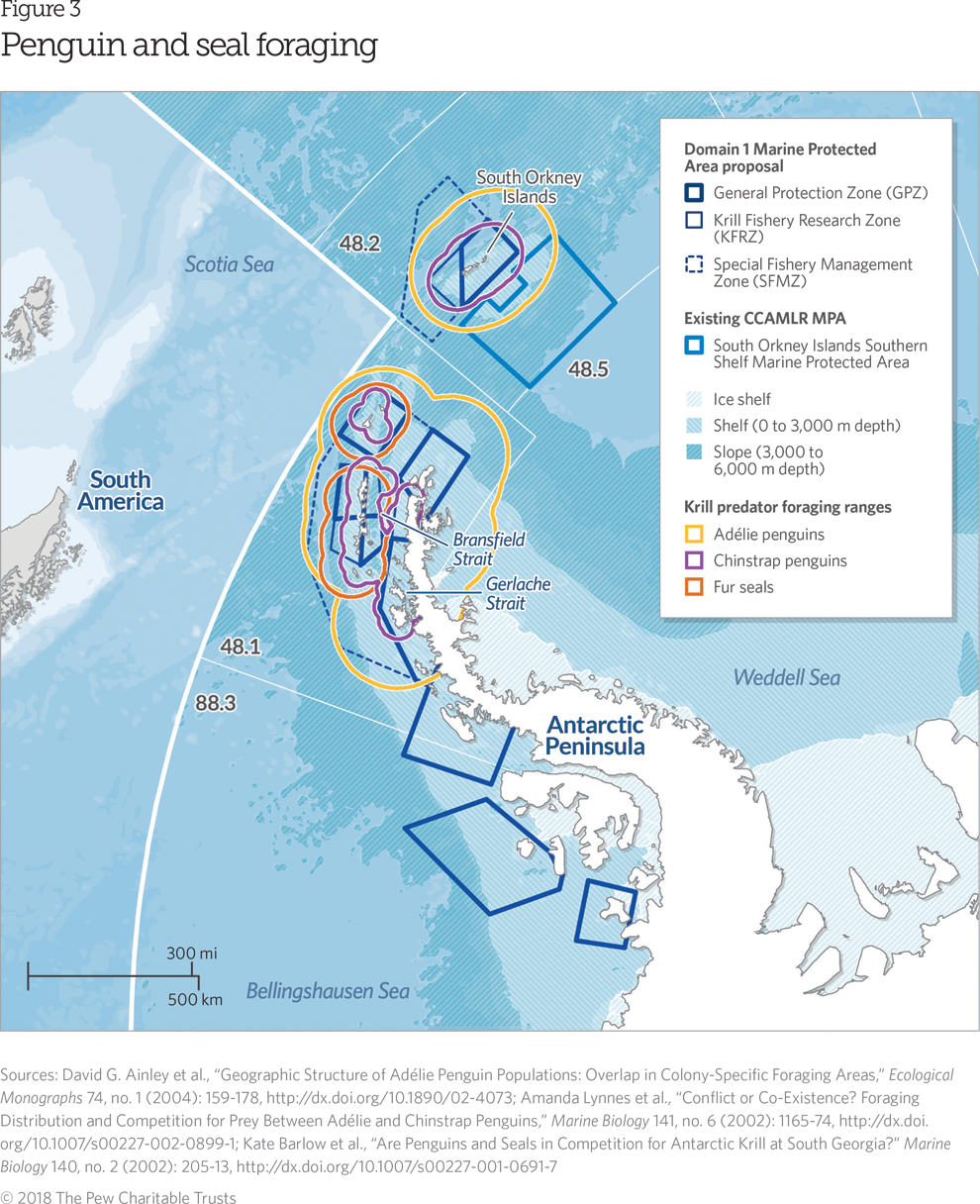
Competition among krill predators in the western Antarctic Peninsula is high. Adélie, chinstrap, and macaroni penguins, as well as fur seals and other animals, depend on the linchpin species as their main food source. Foraging ranges for all predators are calculated by looking at the maximum distance a predator will travel to obtain food.
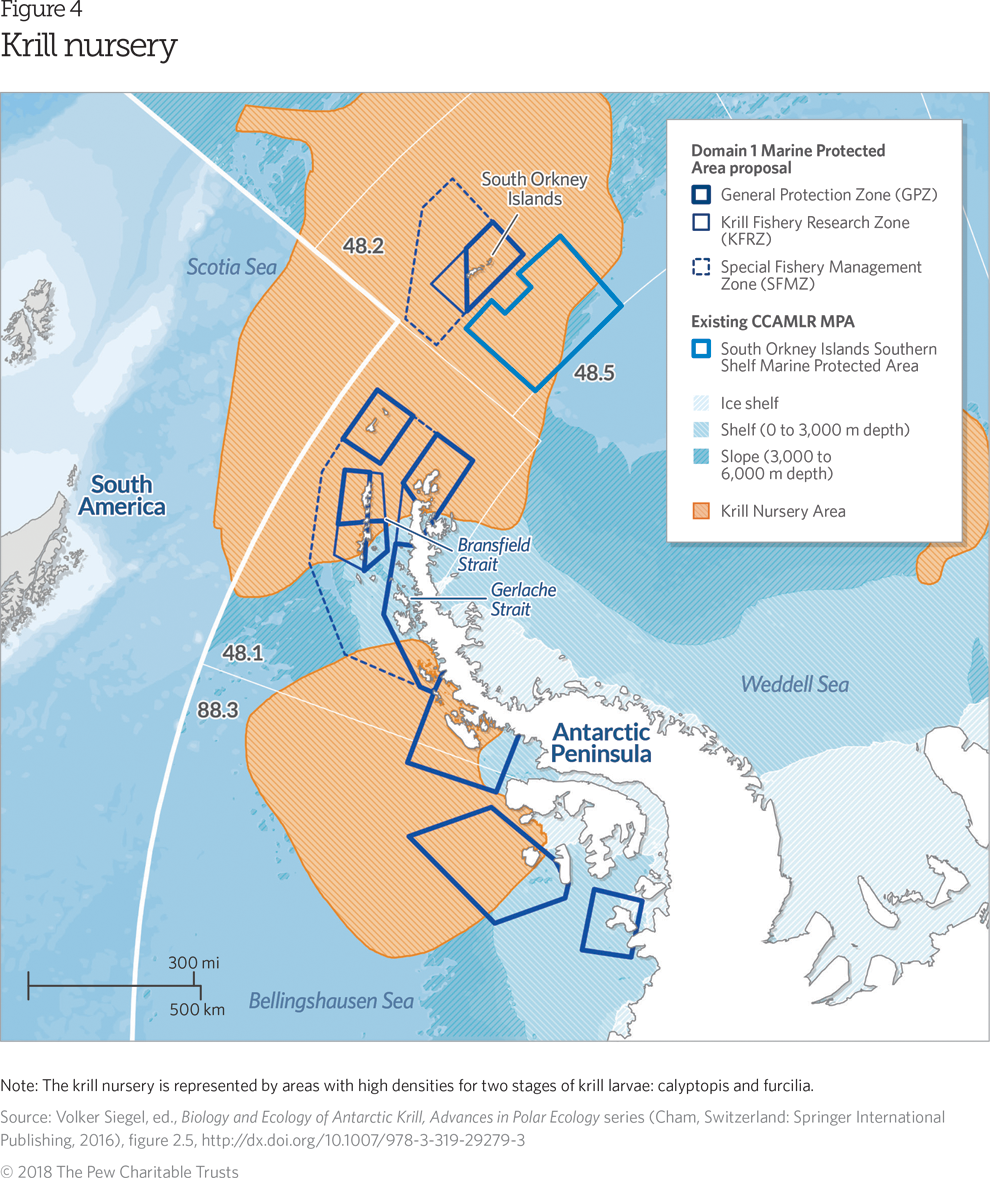
Antarctic krill (Euphausia superba) survive their first winter by feeding on algae under the sea ice, making it key nursery grounds for larval krill. Ice algae production in early spring also boosts the growth of adult krill after the winter, when food is scarce. As the sea ice retreats in the summer, krill feed on phytoplankton blooms when they reproduce. The sequence and timing of these processes within the seasonal ice zone determine the health of krill populations. Temperatures in the region are rising faster than anywhere else on Earth, causing a massive loss of the sea ice that krill cling to and the sea ice algae they eat.
Note: The krill nursery is represented by areas with high densities for two stages of krill larvae: calyptopis and furcilia.
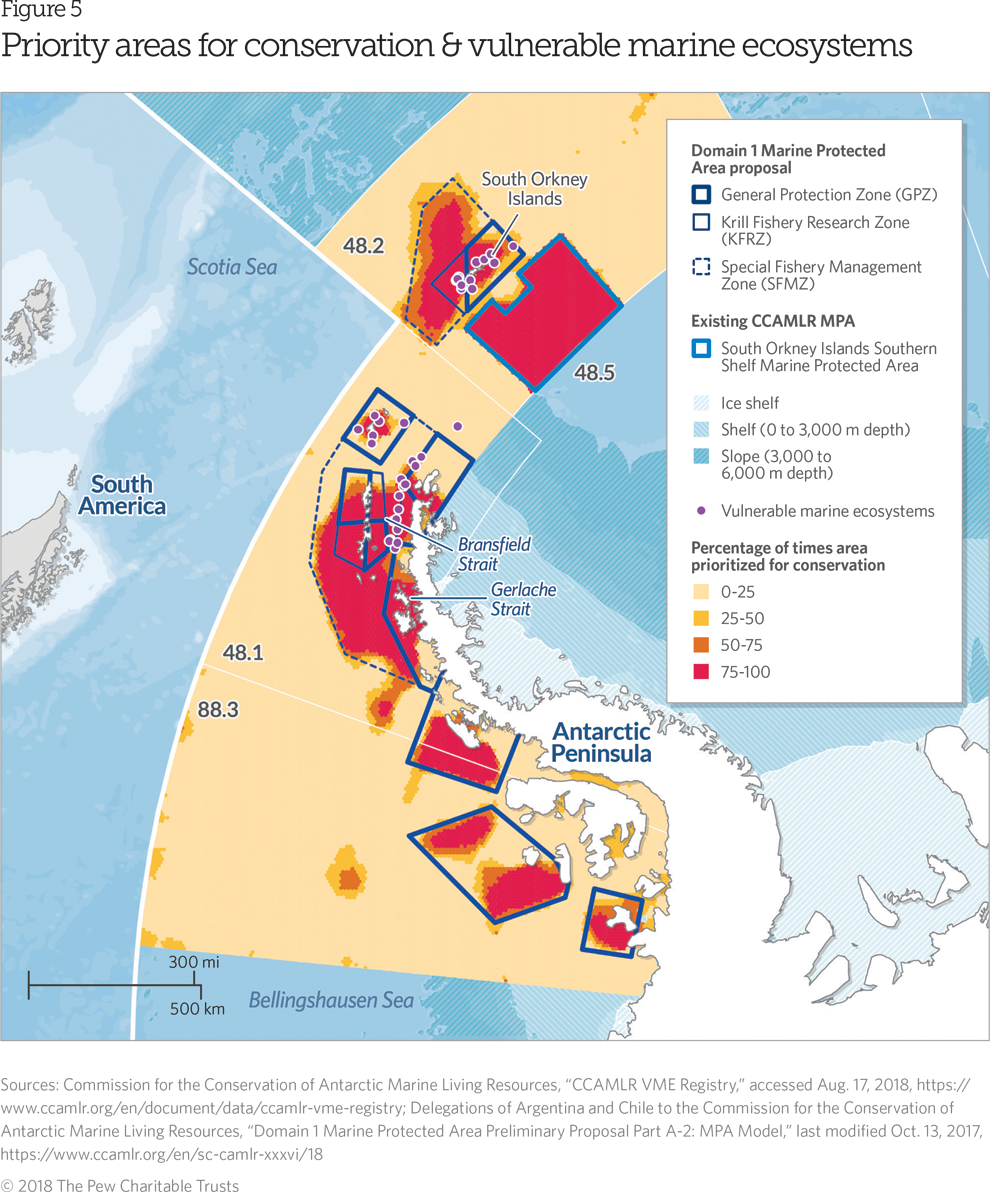
Vulnerable marine ecosystems (VMEs) include seamounts, hydrothermal vents, cold-water corals, and sponge fields. These unique geographical features are areas of magnificent biological diversity. Marine areas are guaranteed protection by CCAMLR once they are classified as VMEs.
Domain 1 MPA proponents identified priority areas to conserve in the region using Marxan, a decision-support tool. Marxan determines conservation objectives for the region by integrating hundreds of data sets on biodiversity, the environment, and human use. Conservation areas are determined based on the percentage of times an area has been prioritized for conservation across all model runs.
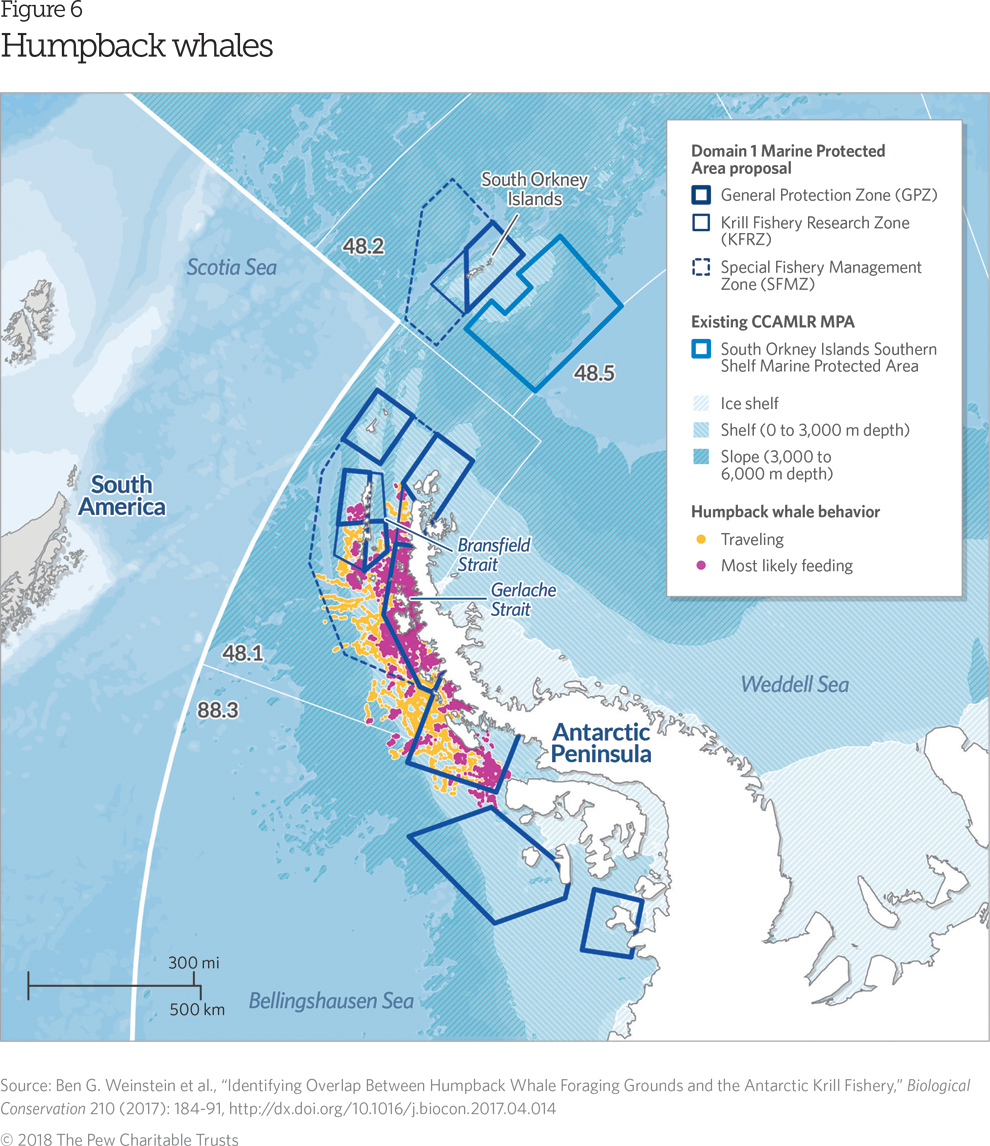
Baleen whales, which filter their food through baleen plates, including humpback whales, are an important part of the Antarctic Peninsula’s marine food web. Hunted during the last two centuries to the brink of extinction, these massive mammals—which feed almost exclusively on krill—are now on the rebound. Management of the Antarctic krill fishery must account for the needs of these recovering whale populations to minimize competition for krill. Important humpback habitat was modeled based on tracking data for whales that were traveling or foraging.
